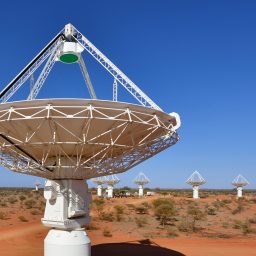Coffee talks
Friday 10/01/2020 @ 11:30, Sala riunioni quarto piano
Daniele D'Antonio (Sydney University), "AGNs and transients from Bologna to Sydney"
In this talk I will describe the work I completed whilst still a Master’s student in Bologna at the Istituto di Radioastronomia (IRA) on multi-wavelength properties of blazars. I will also discuss new research in the field of time-domain radio astronomy I am undertaking at the University of Technology Sydney (UTS). Low radio frequencies have opened a new window of observation for gamma-ray blazars. It has been accepted for some time that these objects have flat radio spectra at high and intermediate radio frequency (GHz frequencies and above). With new data from low-frequency radio telescopes it can be seen that these sources have a flat spectral behaviour even at lower radio frequencies (below 300 MHz). This is what I will show thanks to data collected from the Murchison Widefield Array (MWA) and the Fermi satellite. Indeed, I will also show that the two edges of the electromagnetic spectrum are strongly linked and complimentary for studying these objects. Blazars are a class of time-varying object that come under the category “transients”. Transients are the main topic of my research group based in Sydney. Since the beginning of my PhD, I have started to work in the field of transients and am involved in a number of different projects related to these sources. In particular, I will talk about the data analysis of a transient flare star and a short GRB. GRBs and radio transients are evidently connected with gravitational waves events. The research of radio counterparts following gravitational waves has progressed thanks to the new capabilities of the ASKAP and ATCA. Managing the large number of data collected from ASKAP is an important task. For this reason, we are also building an ASKAP pipeline which will give us all the useful statistical information about the time-varying sources in upcoming ASKAP surveys. Advanced time-series analysis will be used to study the variable emission over time of transients.

